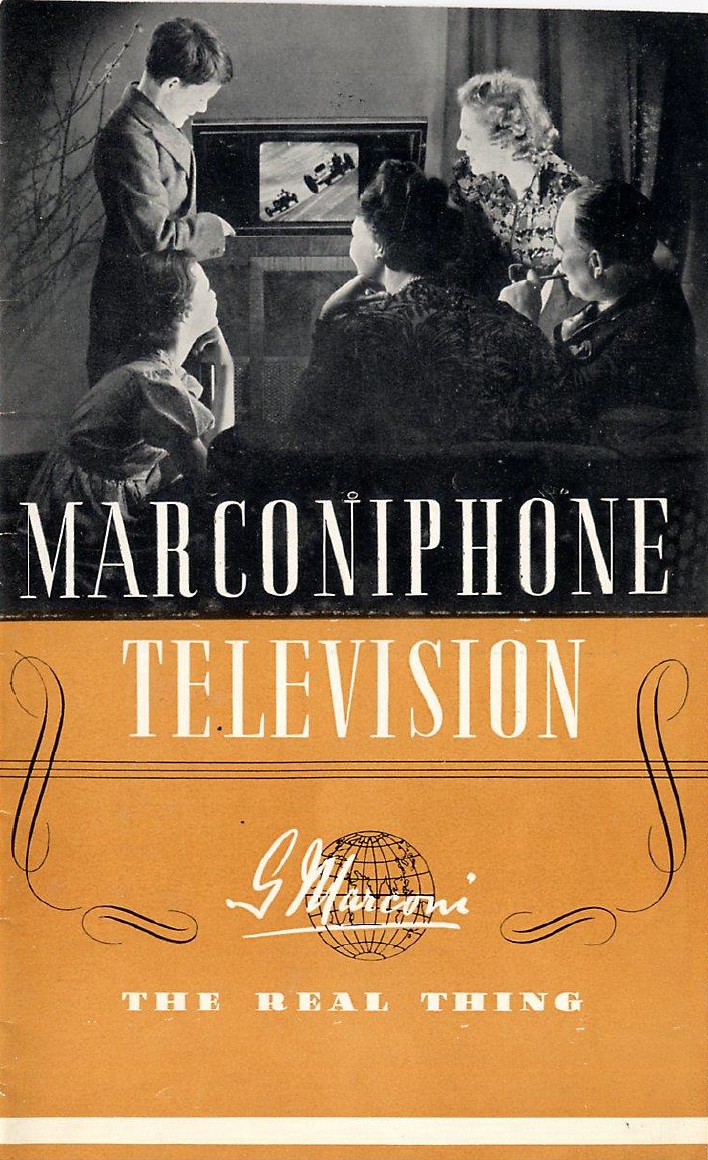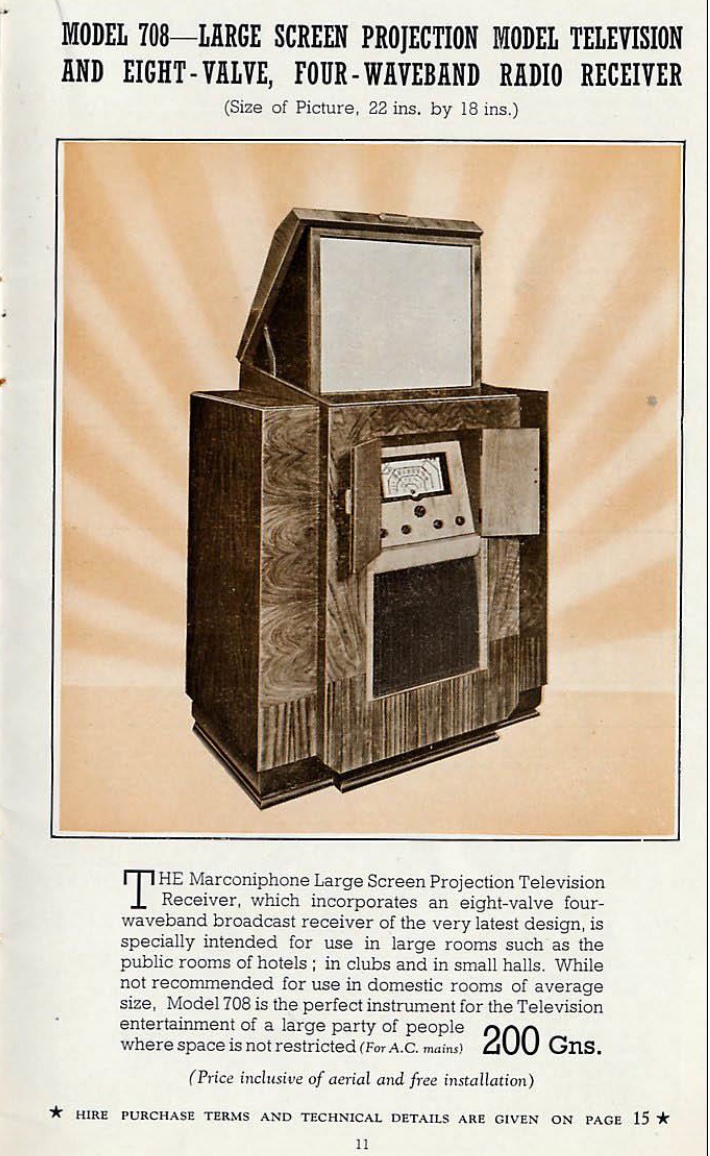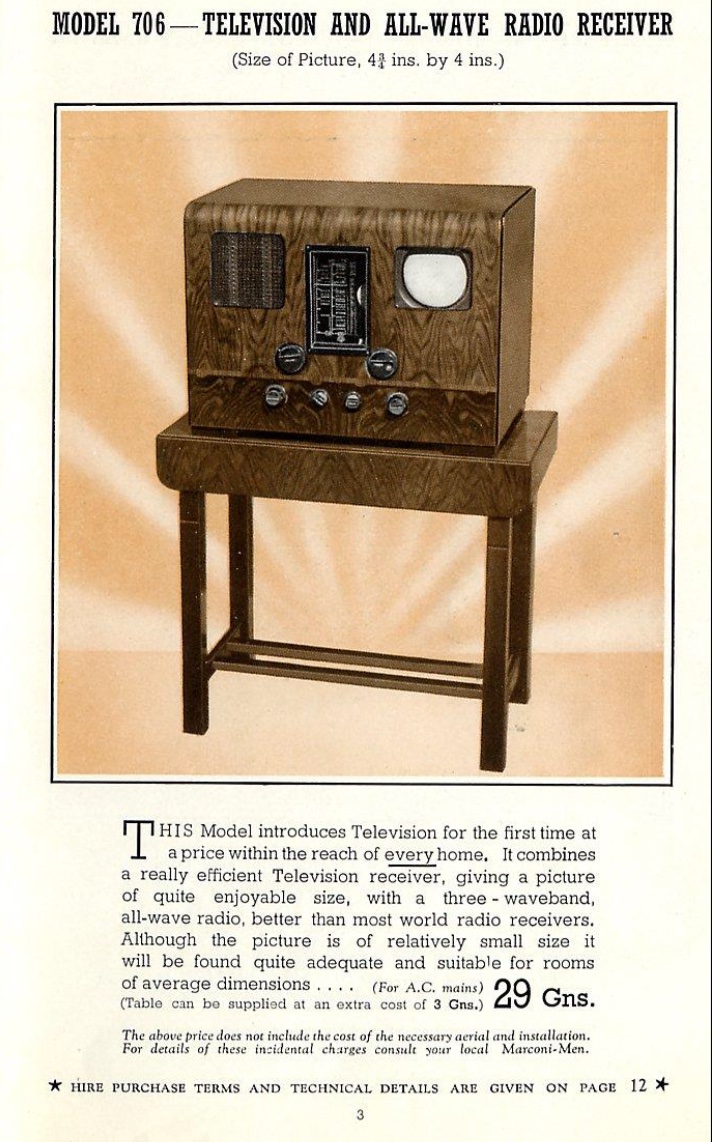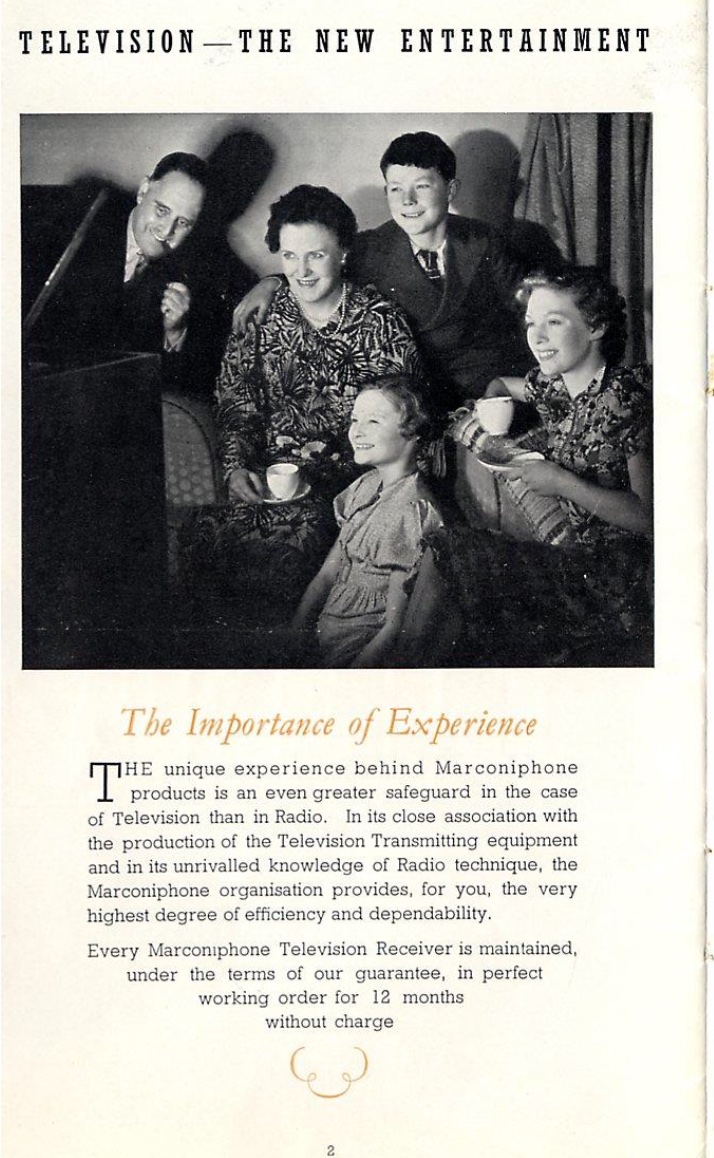OTD in early British television: 2 February 1938

John Wyver writes: On Wednesday 2 February 1938 The Times reported that, ‘A television set with a screen about twice the size of that in the standard home receiver was demonstrated by the Marconi-EMI company in London last night.’ This was the Marconiphone 708, a snip at a cost of 200 guineas, inclusive of aerial and free installation. Which is a price that is just shy of £20,000 in today’s money.
In early 1938 there were perhaps between 3,000 and 4,000 television sets in and around London’s suburbia. The eight manufacturers, of which Marconiphone was one, and their network of retailers, were deeply frustrated by the slow pace of sales. In 20 months’ time, at the start of the war, the total would be a little under 20,000 or so, but the growth spurt was only to come after the Radiolympia trade fair in the autumn of 1938.

The quality of the programmes was one reason adduced for the disappointing sales, along with the lack of awareness of what television could offer. But a major factor was the pricing of sets, which can be seen from the fascinating 1938 Marconi brochure, available online thanks to the Early Television Foundation.

The 708 model, seen demonstrated by The Times, was most definitely top-of-the-range. But as the paper wrote,
The set is meant for clubs, hotels, and demonstration rooms, where a number of people may have to be accommodated, and not for domestic use, except perhaps in the largest houses.
The journalist was impressed that 100 or so people could comfortably watch the set together, and that even viewing the screen obliquely there was very little distortion.
The picture has a faint, greenish tinge, not unlike that seen occasionally in films, but there is no flicker and detail is apparent from a distance.
Those at the press launch had watched the AP broadcast Design: Shape and Decoration, hosted by novelist and art historian Anthony Bertram, whose 1938 ‘Penguin Special’ Design was about to introduce the fundamentals to a wide British public. The Times‘ correspondent was more impressed by the receiver than the programme received:
Even the hideous small handles and other trifling furbelows of furniture removed from time to time from the demonstration piece were plainly and awfully visible.
Along with the rather splendid 708, with its 56cm x 46cm screen, Marconi’s brochure also featured the basic 706 model, which provided a picture that was nearly 12cm x 10cm, rather smaller than the size of a paperback book today. The retail price of this was 29 guineas, or £30 and 9 shillings (or getting on for £2,500 today), when the average weekly wage for a man in manufacturing or similar was £3 and 9 shillings.

The brochure boasted that
This Model introduces Television for the first time at a price that is within the reach of every home… Although the picture is of relatively small size it will be found quite adequate and suitable for rooms of average dimensions.
Rather than being free-standing like the 708 and other models with a vertically mounted cathode ray tube and mirror, the 706 was intended to sit on a table-top, and a matching table was available for an additional 3 guineas.
There was no television rental market pre-war, with Radio Rentals restricting its operations to renting, well, radios, as well as selling television receivers and setting up a mobile repair service. But hire purchase terms were readily available, allowing a consumer to borrow the cost of a set and then pay this back with regular payments, plus interest, over an extended period.
The model 706 required an initial deposit of £3, followed by either 12 monthly payments of £3 1 shilling, or 24 instalments of £1 13s 6d. In the former case you would have paid £33 3shillings by the time the set was actually yours, and in the latter, £36.
HP terms for the model 708 could also be arranged, requiring a deposit of £21 and then 24 monthly instalments of £9 9 shillings.
And then the wonders of television could be enjoyed by your perfect family of smiling lookers-in, with the faces of tea-drinkling Mum and three children brightly illuminated by the reflected image (no 706 here) — even if pipe-smoking Dad has to peer around the corner for a glimpse.

Leave a Reply